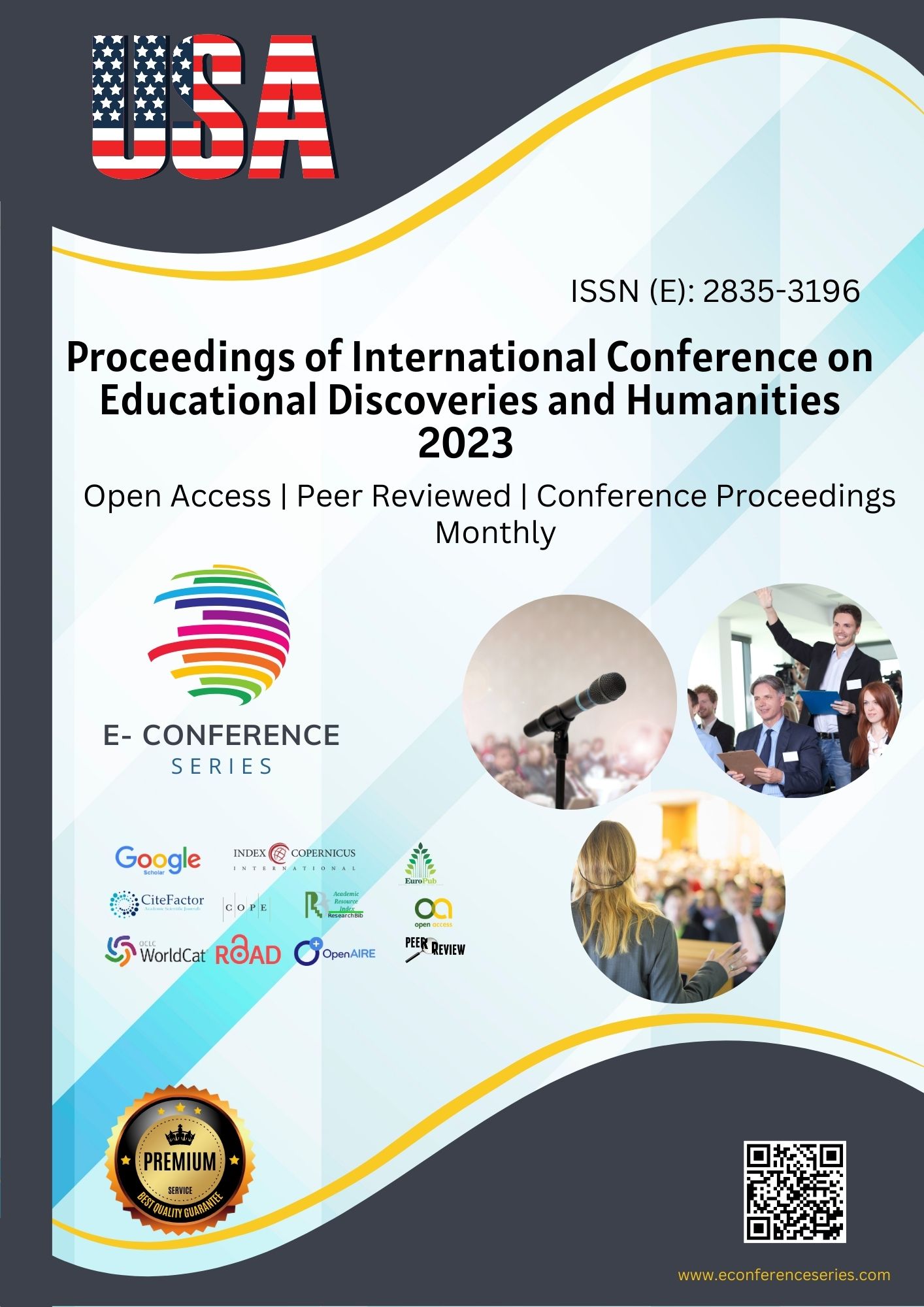"FUNCTIONAL-SEMANTIC FEATURES OF TRANSLATION OF CONVERSION WORDS"
Abstract
In this article the cognitive semantic translation method is substantiated with the help of English conversion characteristics. Peculiarities of conversion are numbered alongside with the ways of transferring it by means of the Uzbek language.
References
Amendola B. Let every second count / B. Amendola // Modern drummer. – URL:
https://www.moderndrummer.com/article/november-2017-make-every-second-count/ (accessed 02/25/2018)
Komissarov V.N. Theory of translation (linguistic aspects) // V.N. Komissarov - M., 1990. - 253 p.
Love B. Changeability, conceptual transformation and context. / B. Love // Proceedings of the 18th Annual Conference of the Cognitive Science Society. - Makhva, 1996. - S. 459 - 463.
Lakina N. Yu. The verb as a structural and semantic center of the utterance // Philological Sciences. Questions of theory and practices. - 2013. - No. 2. - P. 119 - 123.
Makarova I.Yu. Substantive verbs and principles of formation of their meanings // Bulletin of the Tambov University. Series: Humanities. - 2007. - No. 7. - P. 12 - 19.
Martsa Sh. Conversion in English - Cognitive Semantic Approach // Sh. Martsa. - Newxal, 2013. - 304 p.
Oxford English Dictionary. – URL: https://en.oxforddictionaries.com/ (date of access: 02/24/2018)
Downloads
Published
Issue
Section
License

This work is licensed under a Creative Commons Attribution-NonCommercial 4.0 International License.








